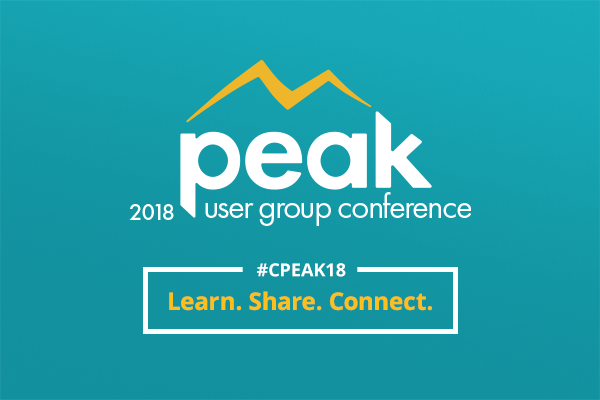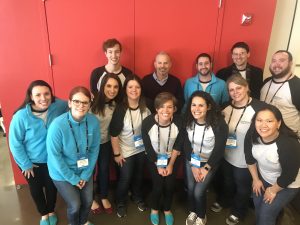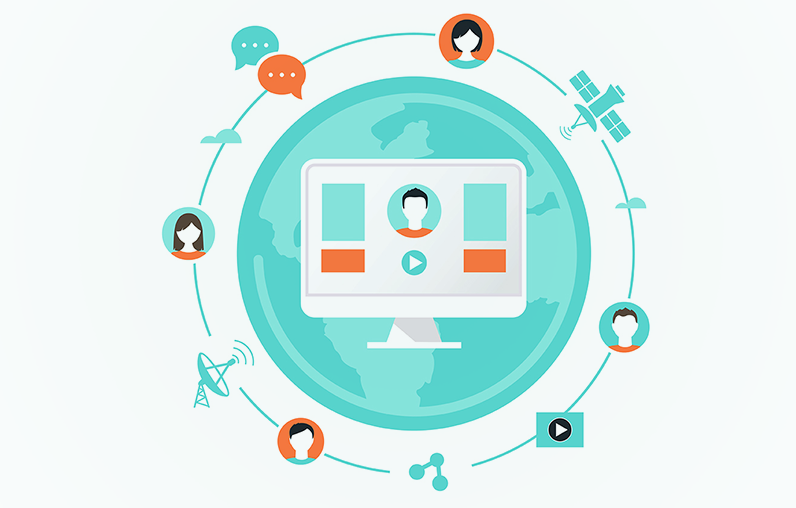
by Rich Finstein | Apr 5, 2018 | Blog
A year ago we made the decision to host our first User Conference. Since this was our initial event, we had some trepidation about whether our community would embrace the opportunity to join us for several days of education, training and networking. Our decision to move forward was quickly validated as we reached the maximum number of attendees we could accommodate in the venue.
When the first day of the conference arrived, we were excited to see in-person the people we interact with on a daily basis. As I began the initial welcome, I mentioned to the group that this felt more like a social function as opposed to a business event. There was a warm feeling that comes when relationships evolve over time and there is continuity of working with the same team to share opportunities and solve problems. For our team, this conference was an important barometer of where we stand. It’s one thing to have one on one interactions, however it’s an entirely different situation to see many of your clients in one setting. We feel extremely blessed to have had this opportunity.
There are three insights that we walked away with from the event:

Click to view photos from Peak 2018.
- We have a vibrant community that has evolved organically with us over a long period of time. There are no shortcuts in getting to this point. CommPartners has an average employee tenure of 8 years with many staff being with us for 12 to 15 years. At times, we don’t think about how important a factor this is in building close client relationships that lead to greater continuity and trust. You could witness this in real time during the conference.
- Peak served an important purpose of facilitating ideas and proving attendees practical applications they can implement today. One of the greatest benefits was the sharing of best practices and hearing how people in the same position overcome day to day challenges of managing professional development within their organizations. We realized we need to keep this conversation going and not wait until we meet again. Therefore, we launched a number of initiatives to give voice to our clients and allow for ongoing engagement. They include:
- Elevate Advisory Board: This is a 13 member panel group made up of mostly clients to provide guidance and feedback on Elevate’s development, provide feedback on our services and share ideas with other Board members.
- CommPartners Mastermind Groups: These groups bring clients together for 4 sessions to engage around topics of leadership, creative thinking and professional growth.
- CP Connect Community: CP Connect is an online community. It will be launching shortly to continue the conversations and sharing of ideas that occurred at Peak.
- CP Cares: We are expanding our altruistic initiatives to support those in need. We are hoping to involve our clients in these efforts.
- We need to continuously come through for our community. You depend on us. This was evident through the passionate conversations that occurred at the conference. We understand this responsibility. In the coming year we have aggressive plans to bring innovation, additional resources and service enhancements to our clients. We’re excited about growing with you and helping you succeed.
If you have any additional feedback or thoughts about Peak or any other items, please contact me.
All the Best,

Rich Finstein

by Aubrey Mellos | Mar 5, 2018 | Blog
Guest blog by Bobby Kaighn, Higher Logic
Online learning is valuable, convenient, and scalable, which makes it an ideal benefit for associations. In the last few years, online learning has also proven to be very popular for members who want to advance their careers.
But many online learning programs aren’t as effective as they could be. Most courses are meant for individuals, which can feel isolating to some members, while other learners may find it difficult to apply online concepts in their daily lives.
Online learning communities can help.
By pairing your online learning programs with an online community, you can improve the member experience and help information stick, which will make your programs more effective. It could even boost enrollment.
Here are four ways community can improve online learning.
Four Ways An Online Learning Community Can Improve Your eLearning Program
1. Community Discussions Keep Learners Engaged
Coursework, no matter how interesting, can be tiring. An online learning community adds an interactive element to elearning courses, including peer discussions, file libraries, blogs and emails.
Learners can use these tools to connect with their peers and start conversations about course topics. They can also ask questions and share their thoughts on how course material relates to their lives. All this interaction helps learners engage with your courses and can make the material in them more meaningful.
2. Peer Support Helps Learners Complete Courses
Unlike traditional education, online learning doesn’t have a built-in support system. You can’t walk up to a professor after a lecture to ask a question or form a study group with friends. In online learning, if someone gets stuck on a challenging concept or loses motivation to complete the program, there may not be anyone around to help.
With an online learning community, you give learners that network of peers. You give them a space where they can connect with peers who are also working through the same course and can help them through difficult material. Participants can ask for help publicly through discussion forums or use private email if they don’t want to open their concern up to the group. Their peers can also help motivate them to finish through conversations or by sharing helpful material, just like they would have in a traditional learning environment.
3. Community Mentoring Programs Help Learners Apply New Skills
Many associations use online learning programs to help members with professional development. With an online community, you can add practical experience to online concepts through a mentoring program.
Learners can either sign up for a mentor while they’re taking the course or after completing the program. Their mentor will then help them apply course concepts in their daily lives, giving them advice and tips based on experience.
By using a community mentoring program to help learners apply course concepts, you make it more likely that they’ll remember and use what they learned. That, in turn, translates to members getting more value from your programs.
4. Community Networking Extends Engagement After Learners Finish Courses
Traditional education uses networking tools like class reunions and alumni groups to build deeper, long-term connections between students and organizations. Often, those connections result in generous financial or advocacy commitments to schools.
Your association can use an online learning community for similar benefits. Build a community for your learning program alumni so they can continue networking and stay involved with your association after their courses are over. They can use their new connections to provide continued support, pursue job opportunities, and more. This long-term networking will also help keep your association and its programs top of mind, which could lead to future referrals as alumni find new people who could benefit from your programs.
Use Community to Improve Your Online Learning Programs and the eLearning Experience
Online communities provide the social element that’s often missing with online learning programs. They allow learners to connect with peers, share their thoughts, and get the support they need for a successful educational experience.
And, by improving your online learning programs, you also increase the value members get from your association, making it more likely they’ll stick with you and refer their friends and family.
Some associations choose to invest in a learning management system to create an online community and promote collaboration between learners. If you would like more information on how to create quality educational experiences that engage and inspire the learner, give us a call at (800) 274-9390 or fill out our online contact form to get in touch with someone.

by Aubrey Mellos | Jan 4, 2018 | Blog
The truth is that all subject matter experts don’t always make great speakers. Additionally, some people can deliver a killer in-person presentation but fall short when presenting to a virtual audience. We’ve compiled a few webinar presentation tips that will help ensure that your webinar speakers are equipped to deliver an amazing and memorable presentation experience:
Our Top 6 Webinar Presentation Tips for Speakers
- Deliver on the expectations of the learner – provide solutions, education, and inspiration. Leave your attendees with key takeaways and action items. But be sure to make it entertaining – tell stories, speak to personal experiences, include video or bold imagery. Case studies or real-world scenarios also work really well to help illustrate points.
- Encourage speakers to have personality and add energy. It can sometimes be awkward when you have to present to your computer screen and you don’t have an in-person audience to infuse natural energy. Consider having another person in the room so the speaker feels like they are talking to an audience. Standing up to present (with the right headset to ensure audio quality) can also help ease a presenter who is more used to in-person events.
- Speak the language of your audience. When preparing your webinar presentation, know who is on the webinar – their role, industry, department, etc. If you have a varied audience, that is okay, but be sure to acknowledge that on the live webinar and set the expectation that some of the content may not be completely applicable. This is also a great way to encourage post-event follow-up if you are unable to address specific audiences.
- Remove the fear of presenting. Presenting can be scary and doesn’t always come naturally. Layer that with a presenter that isn’t all that tech savvy and we may have a recipe for disaster. Consider having another voice to help moderate and make the presenter more comfortable. Always have a training session on the technology before the live presentation to reduce fears about how the webinar platform works, or consider hiring an event production company so that presenters can simply focus on delivering content. Lastly, always do a thorough sound check – bad audio can ruin the best presentation.
- Create a slide deck that encourages engagement. The following list includes our favorite tips on how to prepare a webinar presentation slide deck that people will pay attention to:
- Include polls, breaks for questions, or even encourage attendees to openly use the chat window to share ideas. If the speaker is comfortable they may even address some comments on the live webinar.
- Know the flow of the presentation and your story.
- The webinar should address ONE thing. Don’t try to cram too much into a webinar, you will lose your learner and will simply run out of time.
- Avoid cobbling together a presentation from old decks – start with the narrative first, then build the presentation.
- Leave time at the end for questions and conversation. This can be a great way to infuse the participants own personal experiences around the topic.
- Rehearse – but not too much! Know your narrative in and out, but don’t rehearse to the point that the delivery feels rigid. Rehearsing will also help boost the confidence of the presenter. Comfortable, interactive, and confident speakers top the list of how to ensure your next webinar will be a success.
Need Help Managing Your Webinars?
As a webinar production company, CommPartners has 25 years of experience helping to enhance and advance our clients webinars. We hope these webinar presentation tips will help your speakers deliver an outstanding and memorable learning experience! If you’re looking for someone to manage your webcasts, fill out our online contact form or give us a call at (800) 274-9390 to see how we can help.
Want to talk about how you can take your webinars to the next level? Explore our learning management system, Elevate. Give Meghan a call at 443.539.4851 or email mgowen@commpartners.com for more information.

by Rich Finstein | Nov 13, 2017 | Blog
At the 2017 Higher Logic Super Forum, I along with an association colleague, facilitated a session on the virtues of developing an integrated approach for bringing together online community engagement and an LMS in a single offering. During the session, we discussed how associations typically have these areas configured as unique components. In reality, both provide opportunities for learning. Since an online community engagement strategy is usually focused on facilitating peer collaboration, and the learning management system (LMS) provides expert content, it’s natural they come together to support the stakeholder experience in a synergistic way.
A key connector in this relationship are live online events and webinars. Traditionally, live events and webinars have been positioned on their own through a registration and authentication page provided by the webinar vendor or a separate catalog of programs. A better, more engaging approach is to promote and provide access to these events within a private community.
Here are 5 considerations for using live, online events and webcasts to increase the impact of your online community engagement strategy:
- Registration will feel like a continuum of existing collaboration. Participants who have already been invested in the topic can now be encouraged, in an intuitive way, to take the step to register and participate in online discussions.
- Participation from new and non-engaged members is encouraged with an integrated approach. Live, online events and webinars are tangible ways to draw participants to specific areas of your Web presence. Offering them through a dedicated part of your LMS gives users a reason to create a profile and begin to participate in other social learning and online community engagement opportunities.
- Leverage interaction before and after an online event or webcast. Participants should be able to see who is attending, exchange ideas, and engage the presenters before the event. Afterward, users can continue any conversations that may have been cut short (which happens often!) during an hour program.
- Integrate results from live event and webinar attendance with other participation metrics, providing a complete picture of online community engagement. Host organizations will appreciate having a central repository to evaluate participation outcomes.
- Award badges or ribbons for participation or achievement from webinars in the same area where recognition is provided for other activities. Providing recognition will further encourage participation in future live, online events.
We see webinars and live events becoming much more collaborative and transparent. Bringing them into your online community is a natural way to build participation and provide synergy with your other educational objectives.
If you have interest in learning more about integrating events and webinars with your community contact us online, or email Meghan Gowen at mgowen@commpartners.com.

by Aubrey Mellos | Oct 18, 2017 | Blog
When considering how to monetize your learning, it is important to have a clearly defined and executed business strategy that properly aligns with your Learning Management System. Organizations often think of the LMS as simply the container and delivery site for their online programs. While this is true, if a goal is to make these programs profitable, it’s important to articulate and execute a revenue-generating online learning management strategy.
Here are six considerations to help ensure your e-learning programs are profitable:
Six Tips to Make Your Online e-Learning Program Profitable
1. Build a Knowledge Community vs. a Catalog of Opportunities
The LMS has evolved from a quiet presence within an organization’s website to a full-blown knowledge community that supports and integrates live and on-demand content in many forms. Be sure to incorporate social learning and peer to peer exchanges within your online e-learning platform to increase traffic and build a true knowledge community.
2. Provide Meaningful, Diversified and Relevant Content
Think of your LMS as an online learning store. Having an interesting array of content, create complementary offerings that range from free to high priced, high value. Attractively display your online content to satisfy a wider range of stakeholders’ needs and budgets.
3. Offer Individual Subscriptions & Pre-Payment
No one likes to take out their credit card and make a payment. Have your community pre-commit for access to your entire online e-learning platform, or a portion of this content through a subscription or package of programs. Make subscription purchases financially attractive.
4. Support Group Purchasing or Group Subscriptions
The easiest way to increase users of your online e-learning platform is to have all employees of an organization have access to your content. Engaging a single purchaser for many participants is a nice way to supplement individual purchases.
5. Integrate Online Learning with Other Organization Initiatives
Create loyalty by extending LMS discounts or assigning a pre-paid balance for online learning opportunities as a reward for investment in an organization. This could include a membership renewal or participating in an onsite conference.
6. Have an Attractive and Simple Shopping Cart Experience
Ensure your process for selection and payment of online learning is simple and intuitive. If you are integrating with an external database or AMS for purchases, make sure there is no visual or programmatic disconnect between the two programs.
Like any business, it takes an entrepreneurial approach to generate the returns you are hoping to receive. Investing time in the right online learning platform and having a successful strategy will help ensure a successful ROI.
Contact Us About Your e-Learning Needs
Whether you are considering investing in an LMS or simply looking to expand your organization’s e-learning strategy, CommPartners can help you create quality educational experiences that engage and inspire the learner. Fill out our online contact form or give us a call at (800) 274-9390 to learn how we can help.








